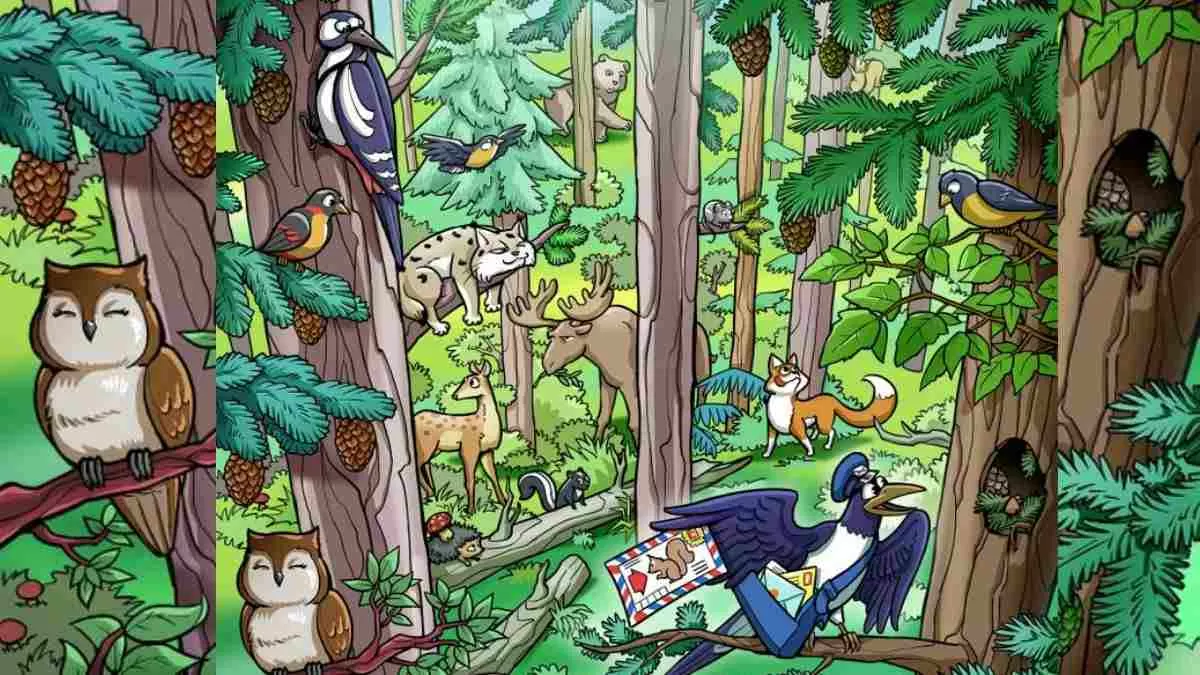In a world bombarded with visual stimuli, our brains often face the challenge of distinguishing relevant information from the background noise.
Optical illusions, fascinating phenomena that play tricks on our perception, serve as a testament to the intricate workings of our visual system.
From ambiguous figures to mesmerizing patterns, optical illusions captivate our minds, prompting us to question the very nature of reality.
Among the myriad of optical illusions that have intrigued both scientists and the general public, one particular challenge has gained considerable attention: the quest to spot the hidden squirrel in the forest in just 10 seconds.
This deceptively simple task has left the majority of participants scratching their heads in disbelief as they struggle to detect the elusive creature camouflaged within the dense foliage.
With a staggering 99% failure rate, this optical illusion eye test poses a formidable challenge to even the most astute observers.
The Challenge Unveiled

At first glance, the image appears to depict a tranquil forest scene, with towering trees, lush vegetation, and dappled sunlight filtering through the foliage.
However, upon closer inspection, it becomes evident that there is more to this seemingly ordinary picture than meets the eye.
Concealed within the intricate tapestry of branches and leaves lies a cleverly hidden squirrel, its fur blending seamlessly with the natural surroundings.
The Science Behind Optical Illusions
To understand why so many individuals struggle to identify the hidden squirrel, it is essential to delve into the science behind optical illusions.
At the core of these perplexing phenomena lies the complex interplay between our sensory perception and cognitive processing.
Our brains are constantly bombarded with sensory information, which must be swiftly analyzed and interpreted to make sense of the world around us.
However, the brain’s processing capabilities are not infallible, and optical illusions exploit the inherent limitations of our visual system.
By manipulating factors such as color, depth, and perspective, optical illusions can trick the brain into perceiving objects differently from reality.
In the case of the hidden squirrel illusion, the intricate patterns of light and shadow create a visual ambiguity that confounds our ability to distinguish the squirrel from its surroundings.
The Role of Visual Perception
Visual perception plays a pivotal role in our ability to navigate the world and make sense of our surroundings.
However, it is not a flawless process, and our perceptions can be influenced by a myriad of factors, including context, expectations, and prior experiences.
In the context of the hidden squirrel illusion, our brains struggle to reconcile the conflicting visual cues presented by the scene.
The dense foliage and intricate patterns of light and shadow create a visual cacophony that overwhelms our sensory receptors, making it difficult to discern the outline of the squirrel amidst the chaos.
Additionally, our brains rely on heuristics—mental shortcuts that help streamline the decision-making process—to quickly process visual information.
However, these heuristics can sometimes lead to errors in judgment, causing us to overlook subtle details that may hold the key to solving the illusion.
The Elusive Squirrel Revealed
Despite the formidable challenge posed by the hidden squirrel illusion, a select few individuals possess the keen observational skills necessary to unravel its secrets.
By adopting a strategic approach and carefully scanning the image for visual anomalies, these intrepid observers can gradually tease apart the layers of deception to reveal the hidden squirrel lurking within the foliage.
For those who succeed in spotting the elusive creature, the sense of accomplishment is palpable, serving as a testament to the power of human perception and the resilience of the human spirit in the face of adversity.
However, for the vast majority who fall short of the mark, the experience serves as a humbling reminder of the inherent limitations of our visual system and the mysteries that continue to elude our understanding.
Implications for Cognitive Science
The hidden squirrel illusion offers valuable insights into the inner workings of the human mind and has significant implications for the field of cognitive science.
By studying how and why individuals perceive visual stimuli differently, researchers can gain a deeper understanding of the mechanisms underlying perception and cognition.
Moreover, optical illusions such as the hidden squirrel provide a unique opportunity to explore the intricate interplay between bottom-up sensory processing and top-down cognitive influences.
By dissecting the neural mechanisms involved in visual perception, scientists can uncover fundamental principles that govern how we make sense of the world around us.
Conclusion
The quest to spot the hidden squirrel in the forest in just 10 seconds is a captivating journey that challenges our perceptions and pushes the boundaries of our cognitive abilities.
As we grapple with the complexities of the illusion, we gain valuable insights into the inner workings of the human mind and the fascinating interplay between perception and cognition.
While the majority may falter in their attempts to unravel the mystery, each failed attempt serves as a stepping stone towards a deeper understanding of the complexities of visual perception.
So, the next time you find yourself gazing upon a seemingly ordinary scene, take a moment to ponder the hidden depths that may lie beneath the surface, waiting to be discovered.
After all, in a world filled with illusions, the truth may be hiding in plain sight.
